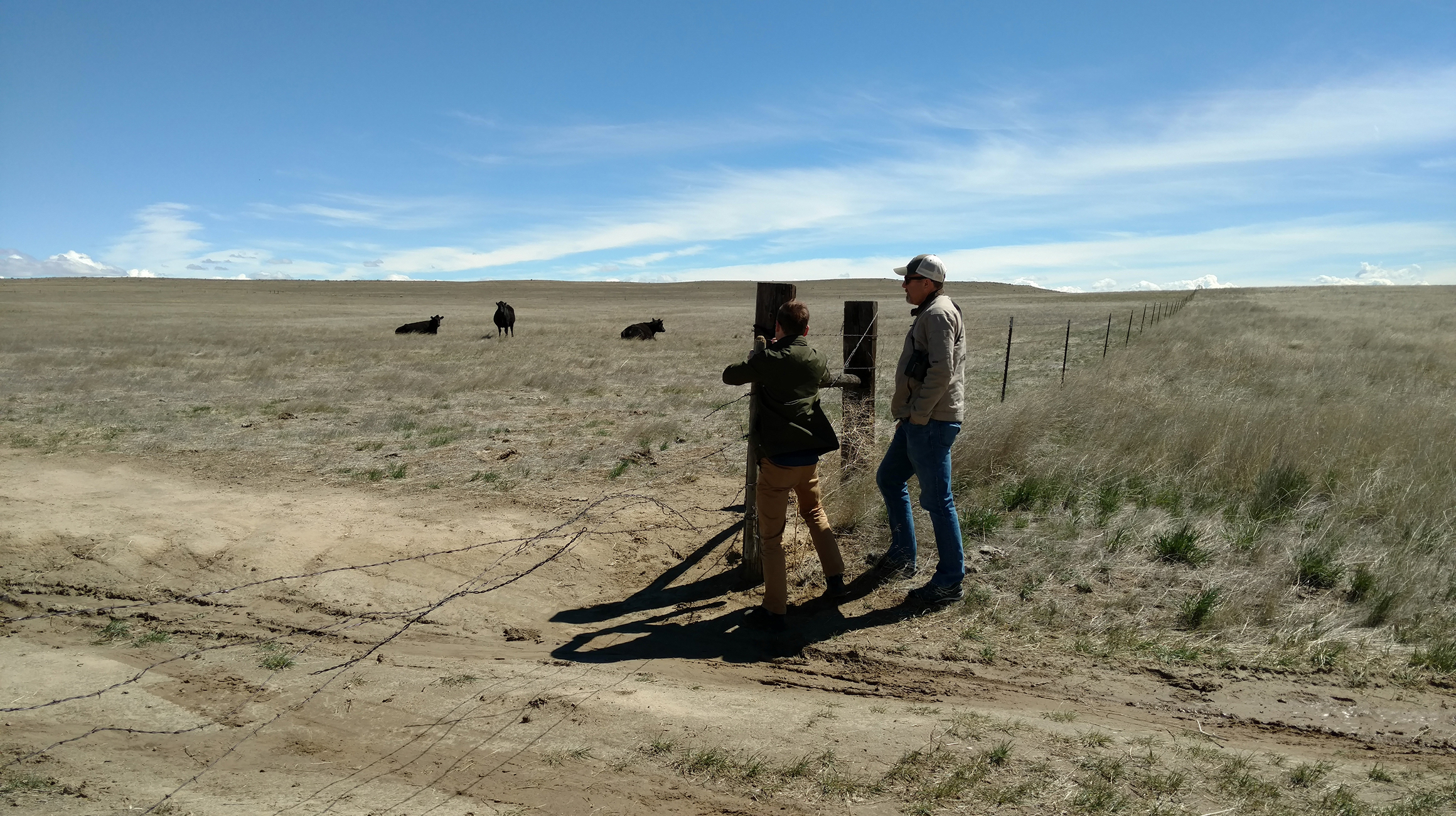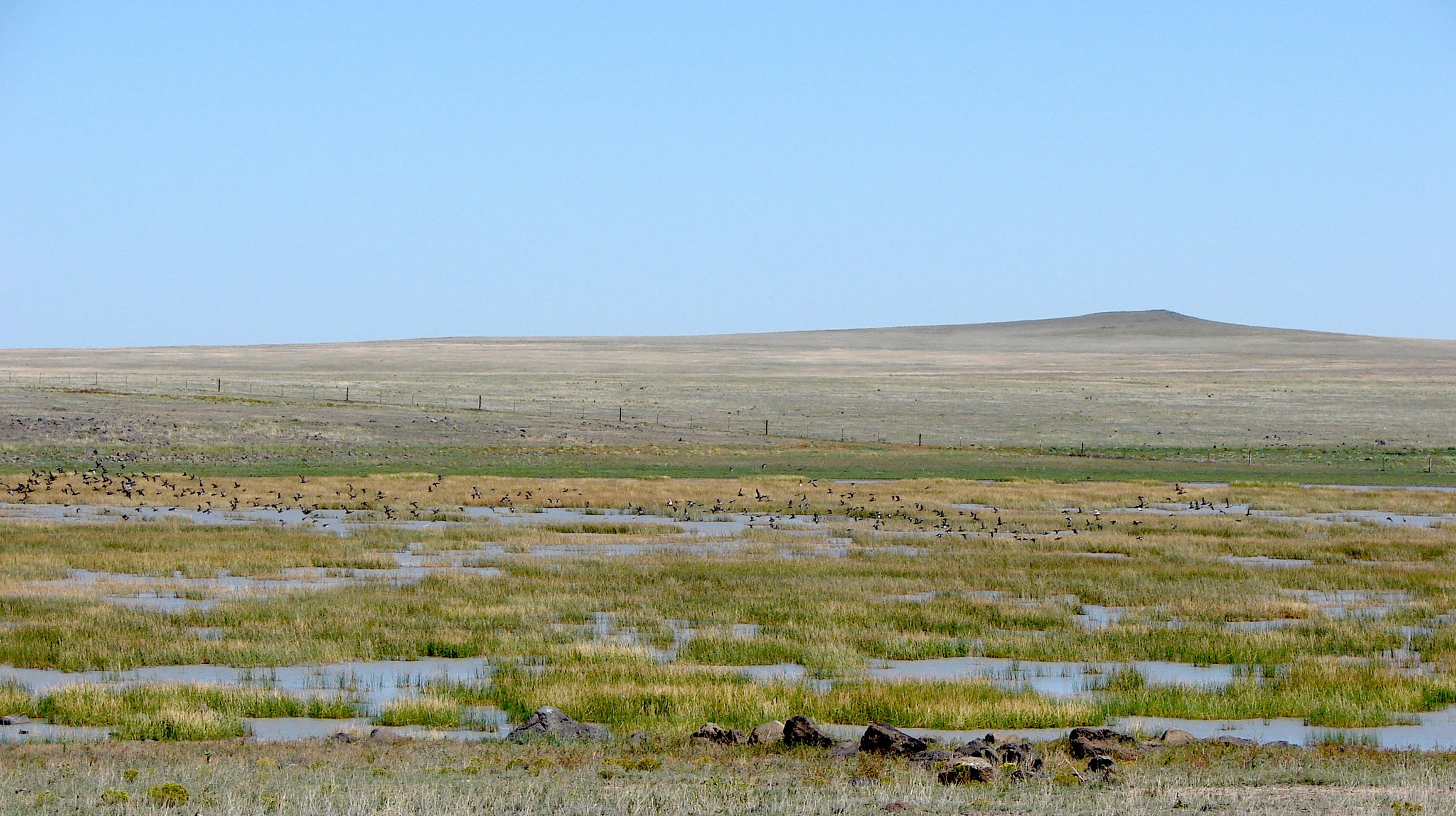Playa Lakes Joint Venture (PLJV) works to conserve birds and their habitats across portions of the shortgrass and mixed grass prairie bird conservation regions in the Western Great Plains. Playas – shallow, temporary wetlands that collect runoff – are the most numerous wetlands in the region. These playas, and surrounding grassland buffers, are important for both wildlife and people; in addition to providing critical wetland habitat, playas recharge the Ogallala Aquifer and improve the quality of the water going into the aquifer. Since this region is 97% privately owned, conservation must occur on private lands. Through enrollment in various United States Department of Agriculture (USDA) Farm Bill conservation programs, such as the Conservation Reserve Program (CRP), landowners help conserve bird populations throughout the region by performing various conservation actions such as removing cropland from production and restoring grasslands and playas.
In 2006, PLJV contracted with DJ Case and Associates to conduct a survey of 1,800 landowners within its six-state region to determine their baseline knowledge of playas and interest in enrolling in conservation programs or implementing restoration practices. The survey also looked at whether there is a link between landowners’ knowledge and attitudes toward playas and their willingness to take action to conserve them or whether decisions are purely driven by economics.

Conservation professionals learn how playa conservation works on a cattle ranch in Colorado. Photo courtesy of Ashley Gramza.
Research Insights
- Most landowners with playas on their properties are willing to conserve them, with many saying the wetlands are a positive presence on the land, primarily because they attract wildlife.
- A majority of playa landowners (74%) were willing (28% ‘highly’ and 46% ‘moderately’) to plant native grass buffers around playas if given an incentive.
- Although landowners are concerned about the future of the Ogallala Aquifer, not all understand playas’ crucial role in groundwater recharge.
- Of 13 possible resources that might warrant additional conservation effort, landowners said they supported ‘more conservation than now’ for only one — the Ogallala Aquifer.
- However, about 50 percent of landowners did not know whether or not playas recharged groundwater, when in fact playas are a primary source of recharge for the aquifer.
Outcomes
The results of this survey changed PLJV’s thinking about and approach to playa conservation— from their communication messages to where they focused their conservation efforts. This foundational shift added human benefits into the equation and opened the door to more conservation opportunities. Prior to the survey, messages about playa conservation were mostly about providing benefits for wildlife; in fact, PLJV had just recently learned playas play a key role in aquifer recharge. In addition to starting to communicate about playas and aquifer recharge, PLJV began working with partners to propose USDA Farm Bill programs that specifically targeted playas and compensated landowners for taking them out of production. For the past twelve years, PLJV has focused its communication messages around playas and aquifer recharge, promoting the connection through film, electronic newsletters, flyers, websites, and a radio show. As PLJV developed and refined its playa conservation decision support tools, aquifer levels and projected depletion rates were incorporated to target outreach and conservation in areas where landowners may be more receptive to conserving playas to help provide future water. The aquifer messaging and targeted outreached has paid off. In 2017, a new playa-focused Farm Bill program was met with great interest in western Kansas, with over 15,000 acres offered in the first enrollment period, more than the 10,000 acres allocated. USDA approved 37% of the offers—restoring 3,687 acres of playas and surrounding grassland.
Additional Information
To learn more about this study, visit the PLJV website or contact Miruh Hamend: miruh.hamend@pljv.org.


